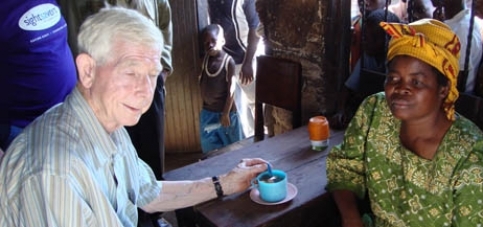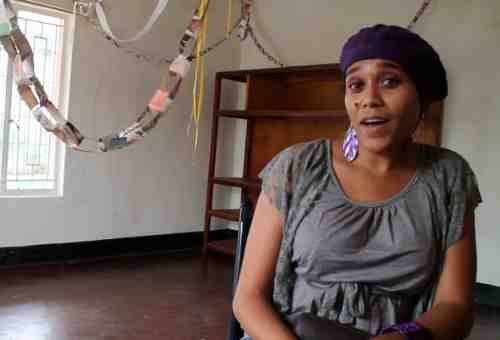
When a group of Sightsavers volunteers had five unforgettable days in Malawi, Tom Shenton, a retired marketing and technical adviser in the chemical industry, kept a detailed diary.
At the end of May a group of four Sightsavers volunteers with over forty years experience of fundraising talks, events and conferences between them, shared the expenses of a visit to Malawi to see on the ground how the money raised for Sightsavers is being used, and to seek additional material to use when talking to potential donors.
Two retired school teachers, a retired lecturer from the Greenwich Naval College, and an ex-marketing manager made up the group, accompanied by the Sightsavers Community Fund Raising Manager, who organised the trip in conjunction with staff of the Malawi Country Office. Two of the group had visited Africa before, but for two others this was a first experience of the continent.
Malawi provided an opportunity to see at first hand various aspects of Sightsavers work. The country office is involved in a wide range of activities including the training of workers and teachers in identifying eye problems, comprehensive eye care and comprehensive eye services projects, rehabilitation and training where blindness or impaired vision could not be treated, and advocacy and support to include children with poor vision in mainstream education. We were also exposed to how the country office team uses systems of referral and transports individuals requiring assessment and treatment, secures provisions of Braille and other equipment, provides direct support for surgical interventions and liaises with other charities and government departments in order to optimise resources.
“Overall it is clear that although there is widespread poverty, the economy is beginning to develop”
Our visit took place in the dry season, effectively mid-winter being south of the equator. Locally this translated in to bright warm sunshine during the day, with relatively cool evenings and nights. This meant that the scenery for the most part appeared dry and uncultivated, although dried stalks of maize provided evidence of where crops had been growing earlier in the year. In the south, where irrigation was available, commercial plantations of sugar and tea were thriving, with small areas of actively growing maize.
Across the country there was a striking abundance of eucalyptus trees – not native to Africa, but now widely planted as a fast growing source of fuel and timber. Mango trees also flourished near groups of houses. The houses were often mud huts with grass thatched roofs, which we later learned had an inner layer of plastic to improve protection from the rain. As we moved closer to towns the houses were made of bricks with corrugated aluminium roofs.
The main roads were surfaced with tarmac and in relatively good condition. Traffic levels in the main towns were high, with a large proportion of mini-buses providing a common form of shared transport, but also many 4×4 pick-up trucks and off road vehicles. Along the main roads there were many new service stations, and the occasional vendors offering sugar cane stalks, sweet potatoes, tomatoes and other fruits, and bags of charcoal. Nearer the towns there were quite large open air markets, with literally hundreds of vendors and customers. Overall it is clear that although there is widespread poverty, the economy is beginning to develop.
Arrival
After an overnight flight with Kenya Airways, with a transfer at Nairobi, and flight via Lusaka in Zambia with views to the peak of Mount Kilimanjaro above the clouds in Tanzania, the group reached Lilongwe, capital city of Malawi “in the warm heart of Africa”.
As in many countries the local government had ensured that the road from the airport to the town centre provides an attractive introduction to the country, and this was certainly true for the road in to Lilongwe, with many flowering trees and shrubs lining the route. A pleasant hotel, albeit with the occasional mosquito!




